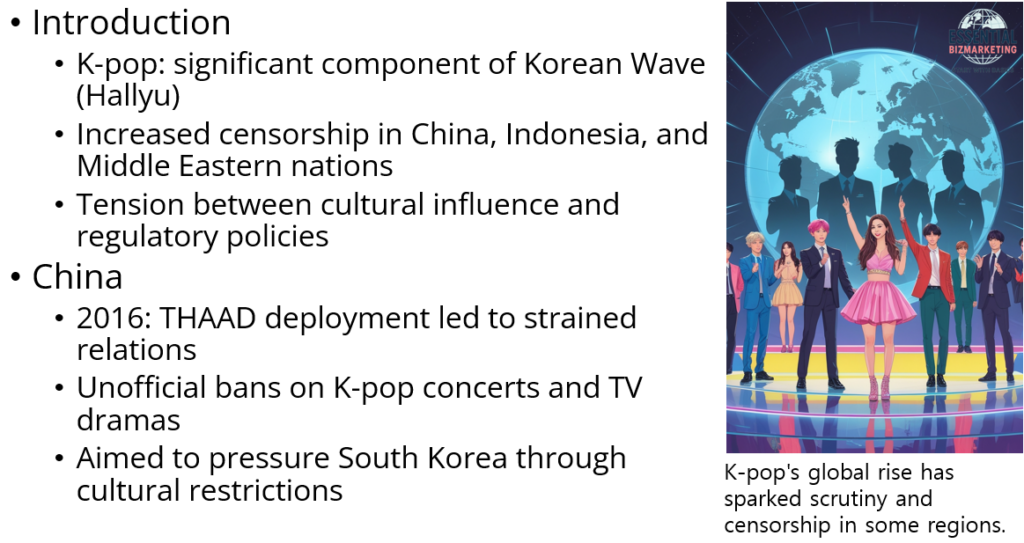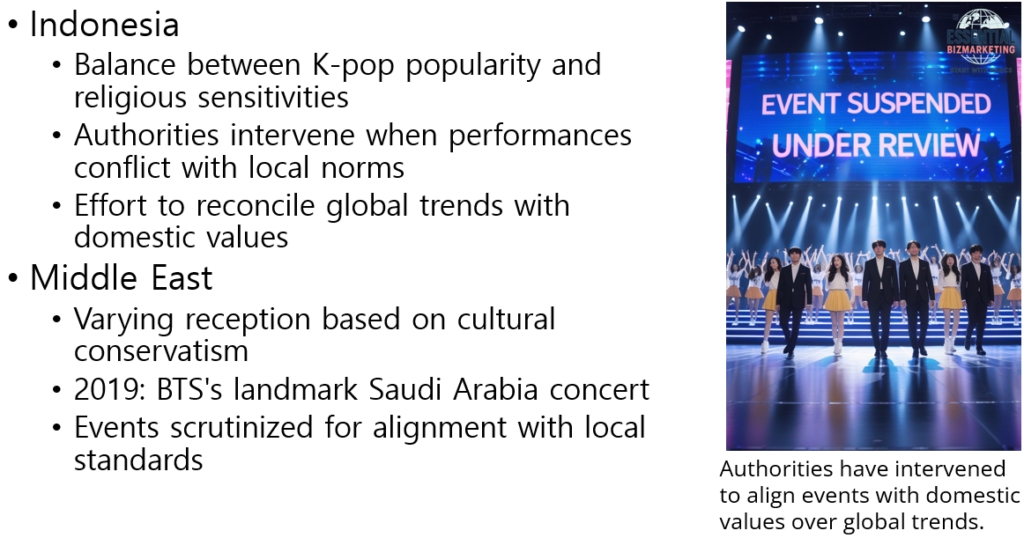Introduction: The Global Rise of K-pop and Emerging Censorship

K-pop, a significant component of the Korean Wave (Hallyu), has garnered immense global popularity, leading to increased scrutiny and censorship in certain regions. Countries such as China, Indonesia, and various Middle Eastern nations have implemented measures to control the dissemination of K-pop and other South Korean cultural content, reflecting a complex interplay between cultural influence and regulatory policies.
China: Political Tensions Leading to Cultural Restrictions
In 2016, South Korea’s decision to deploy the U.S. Terminal High Altitude Area Defense (THAAD) system strained diplomatic relations with China. In retaliation, China imposed unofficial bans on South Korean entertainment, including K-pop concerts and television dramas. This move was perceived as an attempt to pressure South Korea by targeting its cultural exports, thereby limiting the spread of Korean pop culture within Chinese borders.
Indonesia: Balancing Cultural Reception and Religious Sensitivities

Indonesia, with its substantial Muslim population, has exhibited both enthusiasm and caution towards K-pop. While K-pop enjoys a significant fan base, concerns have arisen regarding performances deemed inconsistent with local cultural and religious norms. Authorities have occasionally intervened to modify or cancel events that were considered inappropriate, reflecting an effort to balance global cultural trends with domestic values.
Middle East: Navigating Conservative Cultural Landscapes
In the Middle East, the reception of K-pop varies across countries, influenced by differing levels of conservatism and openness to foreign cultures. For instance, in 2019, BTS became the first foreign act to perform a solo concert in Saudi Arabia, marking a significant milestone. However, such events are often subject to scrutiny to ensure alignment with local cultural and religious standards.
South Korea: Internal Debates on Cultural Representation

Interestingly, South Korea has also engaged in self-reflection regarding its cultural exports. In 2019, the South Korean government introduced guidelines aimed at promoting diversity in K-pop, criticizing the uniform appearances of idols. However, these guidelines were withdrawn following public outcry over perceived state overreach, highlighting the tensions between cultural production and regulatory intervention.
Conclusion: The Complex Dynamics of K-pop Censorship
The censorship and restriction of K-pop content across various countries underscore the challenges that arise when global cultural phenomena intersect with local political, religious, and cultural contexts. While fans worldwide embrace K-pop, its dissemination is often mediated by governmental policies reflecting broader societal values and geopolitical considerations.
📚 References
Committee to Protect Journalists. (2019). 10 most censored countries. https://cpj.org/reports/2019/09/10-most-censored-eritrea-north-korea-turkmenistan-journalist/
Lyons, K. (2019, February 20). South Korea nixes diversity rules after saying K-pop stars ‘look identical’. The Guardian. https://www.theguardian.com/world/2019/feb/20/south-korean-government-sparks-outrage-by-saying-k-pop-stars-look-identical
Muhammad, K., & Valeriano, B. (2024, April 24). When China banned Korean boy bands. The Diplomat. https://thediplomat.com/2024/04/when-china-banned-korean-boy-bands/
Wikipedia contributors. (2023, October 1). Cultural impact of BTS. In Wikipedia, The Free Encyclopedia. https://en.wikipedia.org/wiki/Cultural_impact_of_BTS
📁 Start exploring the Blog
📘 Or learn more About this site
🧵 Or follow along on X (Twitter)
🔎 Looking for sharp perspectives on global trade and markets?
I recommend @GONOGO_Korea as a resource I trust and regularly learn from.
